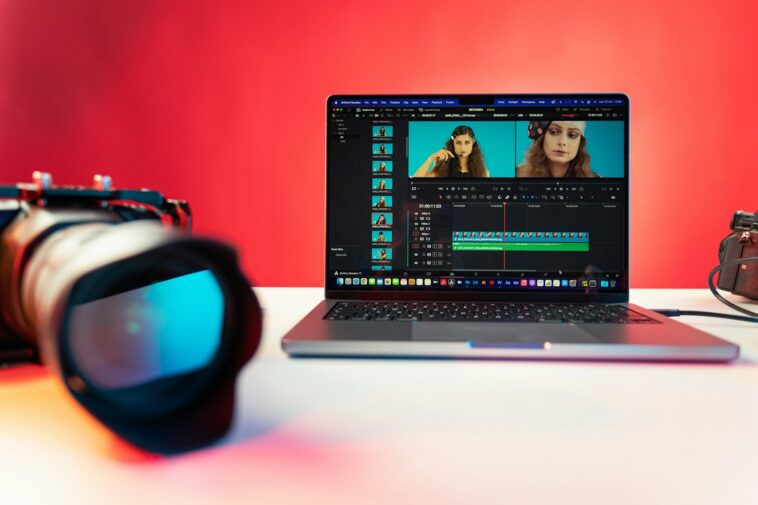There’s never been a better time to turn video editing into a real business. Just think about how many videos you scroll past every day on social media, YouTube, or even company websites.
Everyone is creating video content—but not everyone knows how to make it look professional. That’s where video editors come in.
Now, here’s the good news: you don’t need years of film school or a fancy studio to start.
I actually believe starting from zero can be an advantage because you’ll be learning in real time while shaping your business around what clients actually want.
If you’ve been curious about video editing but held back because you “don’t have experience,” let’s break that mindset right now.
I’ll walk you through how to start a video editing business from scratch, step by step.
Step 1: Learn the Basics Without Overcomplicating Things
The first hurdle is often the scariest—learning how to edit videos. Here’s the thing: you don’t need to master every software out there. Start with something approachable and affordable (even free).
DaVinci Resolve (free): Professional-grade, but beginner-friendly.
CapCut (free): Great for social media-style edits.
Adobe Premiere Pro (paid): Industry standard, worth learning if you want bigger clients.
Don’t pressure yourself to “know it all.” The only goal in the beginning is to get comfortable cutting clips together, adding transitions, adjusting audio, and exporting in the right format. A few hours of YouTube tutorials can honestly teach you enough to start.
Step 2: Build a Simple Portfolio
When you don’t have experience, a portfolio makes all the difference. But here’s the trick: you don’t need paying clients to create one.
Ideas for building a starter portfolio:
Edit your own vlog or travel footage.
Take stock footage (free clips from sites like Pexels or Pixabay) and turn them into a mini-commercial.
Offer to edit a friend’s birthday video, podcast clip, or workout montage.
Repurpose trending TikToks or Instagram reels (without reposting them, just use as practice).
The goal isn’t perfection—it’s proof. A potential client wants to see that you can handle the basics and understand style. Three to five solid samples are enough to get started.
Step 3: Pick a Niche (Even If It’s Temporary)
One of the fastest ways to stand out is to focus on a specific type of editing. At first, it might feel limiting, but choosing a niche actually makes it easier for clients to say yes.
Some niches to consider:
Content creators (YouTube intros, vlogs, gaming clips)
Businesses (product promos, explainer videos, testimonials)
Podcasters (short video clips from long episodes)
Social media reels (quick edits for TikTok, Instagram, or Facebook)
You can always change your focus later, but starting with a niche helps you build momentum.
Step 4: Set Up Your Business Foundation (Keep It Simple)
Don’t get bogged down in paperwork at the start. Focus on being “ready enough” to take on paid clients.
Here’s a basic setup:
Freelance platforms: Create profiles on Fiverr, Upwork, or Freelancer.
Social presence: Set up an Instagram or TikTok page where you post your edits.
Payment method: Use PayPal, Stripe, or Wise to receive payments internationally.
You can formalize things later (like registering a business name or getting an LLC), but don’t wait until everything is perfect before you start charging.
Step 5: Find Your First Clients
Here’s the real question: how do you get someone to pay you if you’re brand new? The answer is to keep it simple and proactive.
Try these strategies:
Offer discounted first projects: “I’m building my portfolio and offering 3 edits at a special price.”
Pitch to small creators: DM YouTubers or TikTokers with under 50k followers who might need editing help.
Local businesses: Ask restaurants, gyms, or salons if they’d like short promo videos.
Referrals: Tell friends and family what you’re doing—chances are, someone knows someone who needs editing.
Remember: your first few clients are about building confidence, testimonials, and repeat work.
Step 6: Develop a Workflow That Saves Time
Editing is fun, but it can also eat up hours if you’re not careful. Creating a simple process early will make your business much smoother.
Here’s an easy system you can copy:
Client sends raw footage and instructions.
You confirm what style/length they want.
Do a first draft and send for review.
Apply revisions (limit how many revisions you offer—usually 1–2).
Deliver final video.
Over time, you’ll get faster. That’s how editing turns from a hobby into a scalable business.
Step 7: Keep Learning and Raising Your Rates
At the start, you might charge $20–50 per video depending on length and complexity. That’s normal. But as your skill grows, so should your rates.
Ways to level up:
Learn motion graphics or color grading.
Take short courses (Skillshare, Udemy, or even free YouTube).
Invest in better equipment when you can (a good laptop, headphones, external hard drive).
Ask for testimonials and showcase them.
Clients will pay more when they trust you deliver consistently.
FAQs
Do I need expensive equipment to start?
No. A decent laptop and free software like DaVinci Resolve are enough to begin. You can upgrade later.
How long does it take to get good at editing?
It depends on how much you practice. With consistent effort, you can be client-ready within 1–3 months.
Should I work for free at first?
Not necessarily. Instead, create practice edits for yourself or offer a discounted rate to early clients. Your time is valuable.
What if clients don’t like my edits?
That’s part of the process. Ask for clear feedback, make revisions, and improve with each project. Even experienced editors get revisions.
Can I really make a full-time income from this?
Yes, but it takes time. Many editors start part-time, build a client base, and eventually transition into full-time once they have steady projects.
Final Thoughts
Starting a video editing business with no experience might feel overwhelming, but it’s actually one of the easiest creative businesses to get into right now.
All you need are the basics: a willingness to learn, a few practice projects, and the courage to reach out to potential clients.
Think of it this way—everyone with a phone is creating videos, but not everyone knows how to polish them. That’s your opportunity.
So here’s my question for you: if you opened your laptop today, what’s the very first video you’d practice editing?





GIPHY App Key not set. Please check settings